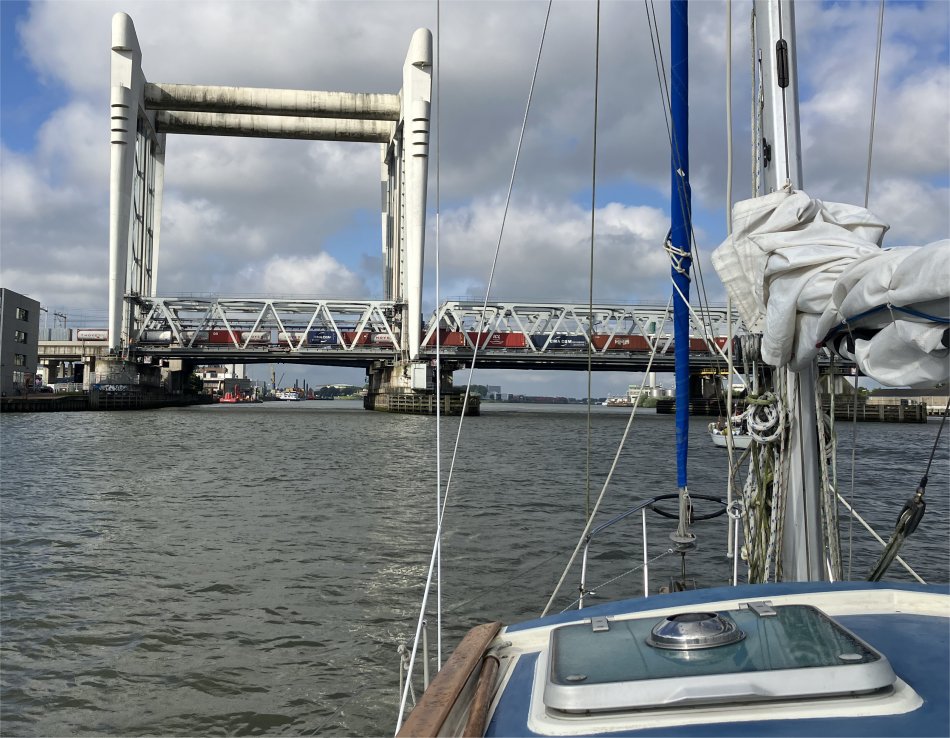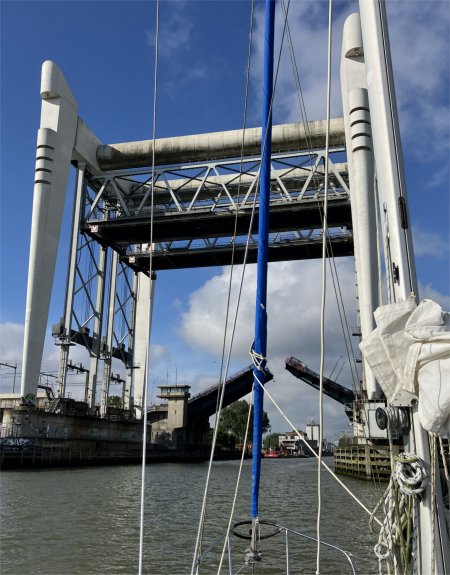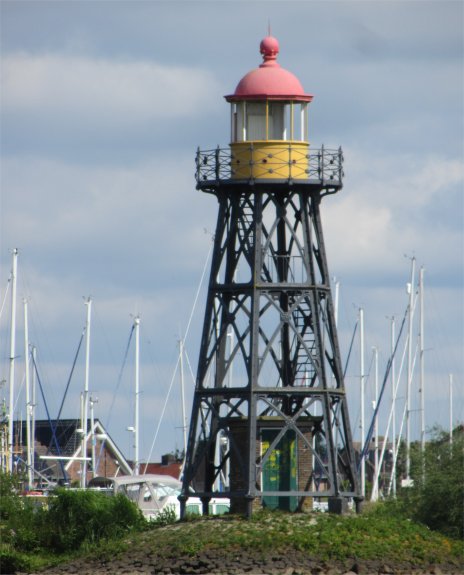Once through those massive locks, we headed down the Keeten-Mastgat. Random sprinklings of sentinel like wind turbines lazily spun their blades in the light breeze. Geese and swans carpeted select areas of the waters, and small fishing boats zipped about like water beetles. Large barges gracefully traced out feathery furrows through the channels, and large motor cruisers did their utmost to create as much wake as possible. The sun shone kindly upon us while cotton wool clouds played chase-me across the sky. What a contrast to yesterday.
We soon reached the Krammersluizen, and then we caught sight of the sluis at Bruinisse. Soon we were ensconced in the large marina at Bruinisse. Mooring was difficult since a fair wind had got up and was taking the boat where it wanted. Willing hands ashore made life simpler.
A chap just across the pontoon from us was having work carried out on his engine by a marine engineer. He later showed me a bowl with what appeared to be diesel in it. Closer inspection showed it to be contaminated with diesel bug. Diesel bug microbes appear as brown slime in your fuel tank but can also be seen as dark particles in your filter bowl.
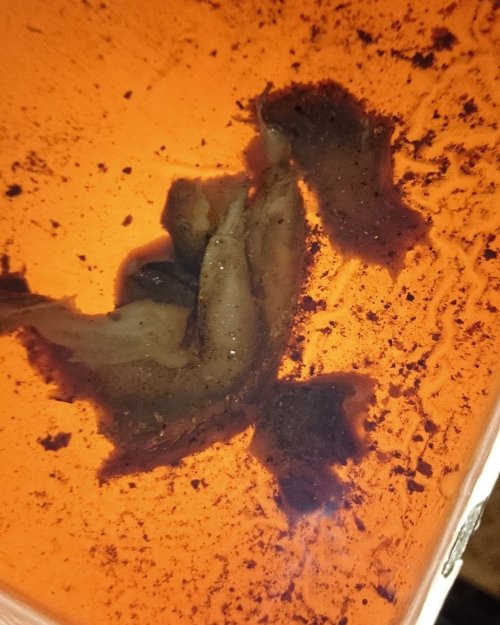
Diesel Bug Sludge
|
Diesel bug is a mixture of different microbes, bacteria and fungus that can live and thrive in the interface between water and diesel in your fuel tank. Like most bacteria it will reproduce quickly to potentially become a serious problem in a short time. It particularly likes warm weather but can strike anywhere.
Once pulled through into your engine the 'bug' can cause problems in almost every part of it, increasing fuel consumption, clogging filters and reducing fuel flow to a standstill.
The introduction of biofuel or FAME (Fatty Acid Methyl Ester fuels) into marine diesel has given the bug a more readily available source of food. With the source of biofuel being so diverse - literally everything from fish oil and rapeseed to the fat from a fast-food fryer - there are a whole plethora of new bugs hungry for it.
Biofuels are hygroscopic (i.e. over time they absorb moisture from the air) and it is this moisture that allows diesel bug to thrive. Over 1,500 forms of diesel bug have been identified so far. The reduction in sulphur in fuel over recent decades has been necessary to reduce marine diesel's environmental damage, but has exacerbated the issue by creating a much less caustic environment for the bug to live in.
Diesel bug can be brought into your tank from an infected fuel source, but also lives in the air to be absorbed into biofuel. Filter changes and regular use will usually shift low levels of infection, but long periods, when the engine is unused or unserviced, can create an environment where the bug can thrive.
Modern diesel fuel is so highly refined that it begins to break down after 6-12 months. This is when the danger begins for diesel bug. As water is denser than diesel it will sink to the bottom, allowing the bug a better hiding place from any cursory checks.
Once contaminated, the system, particularly the fuel tanks, needs to be drained and thoroughly cleaned by hand and dried. Alternatively, fuel polishing can be carried out using specialised equipment - at a cost of course. This is the operation that was being carried out on the boat just opposite us.
If caught by the bug while on passage, a short-term fix which should get you back to shore safely if you can't use the fuel tank, you can sit a can of clean fuel next to the engine, remove the feed pipe from the outlet of the fuel water filter, drop it into the can and run the engine directly from the fuel can to get you home.
Enough of the rant on diesel bug, a boring topic, but it is paramount mariners are aware of the problem.
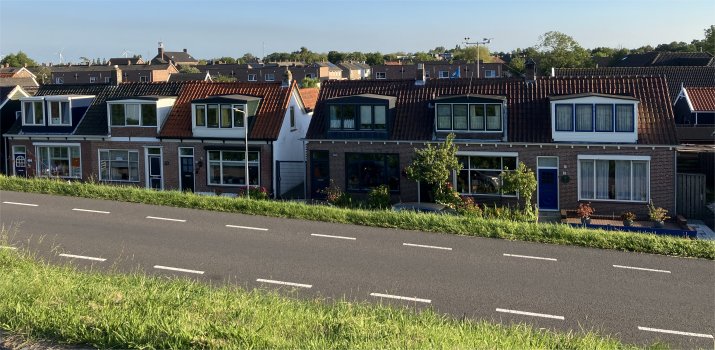
Bruinisse Below the Dyke
|
In the evening, we strolled along the tall dyke to the tiny town of Bruinisse, which lay well below the level of the dyke, passing a huge holiday park of cream and grey chalets.
Bruinisse is located in the northeast of Zeeland by the Grevelingendam, on the island of Schouwen-Duiveland. It was founded at the end of the 15th century by Anna Burgundy after this part of Schouwen-Duiveland was dyked. The old core of the village consisted of a so-called ring core which formed the centre of the village. Until 1997 Bruinisse was an independent municipality, but now the village belonged to the municipality of Schouwen-Duiveland.
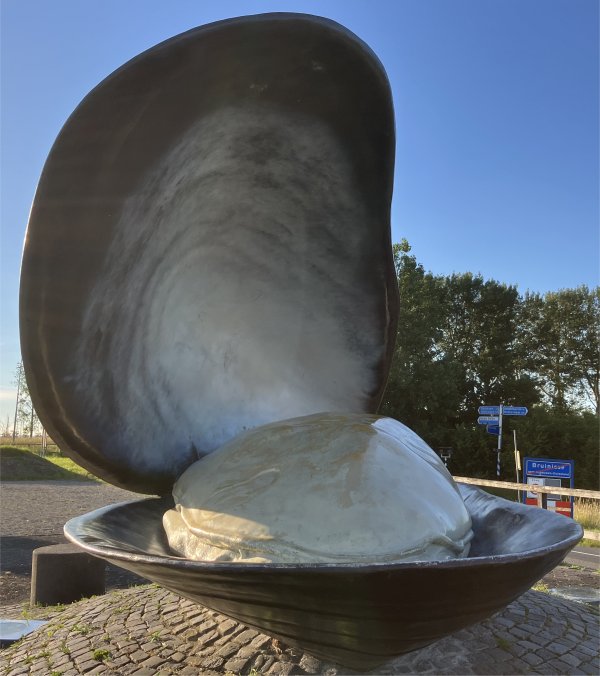
Symbol of Bruinisse
|
Locating a pub that served food, we sat down, enjoyed a beer, and ordered food. I ordered baked cod, and Rex ordered schol (plaice). We both got baked cod; where did that go wrong. But it was very tasty.
While Rex was enjoying his food, whingeing at the overly large portion of chips that usually gets served with Dutch food, he inhaled coleslaw down his windpipe. He normally wolfs all his food down in the time it takes me to have just a few mouthfuls, and this could have been a cause. Whatever, he ended up engaged in a coughing fit. An elderly woman at a nearby table ordered copious amounts of water for Rex, and other customers were alarmed. I've been through this before with children and grandchildren, and find a whack to the middle of the back helps. Rex was just embarrassed. He rectified the situation with a Pavlova follow up.
The sun was dropping, as was the temperature, and we walked back to
Duonita. A cold, north-westerly wind was making its presence felt.
